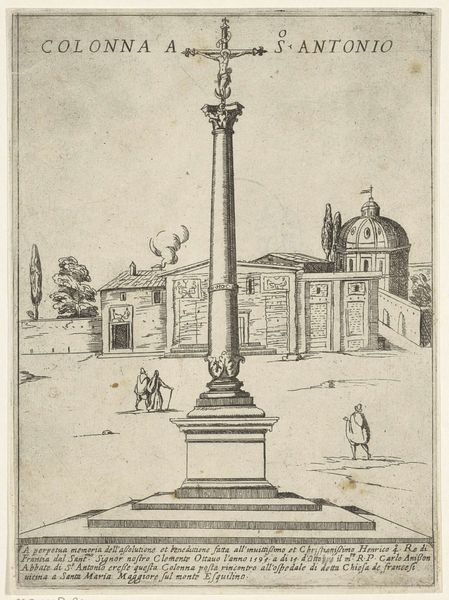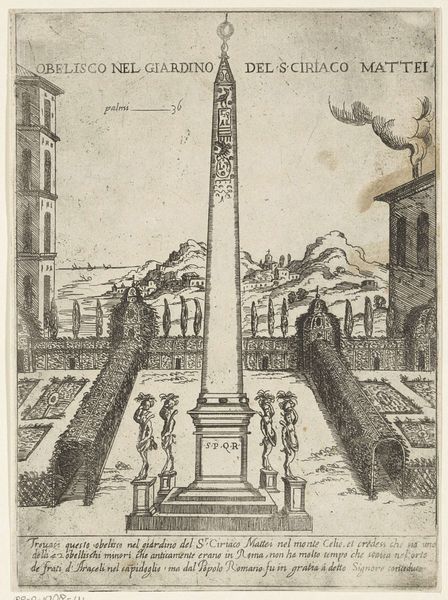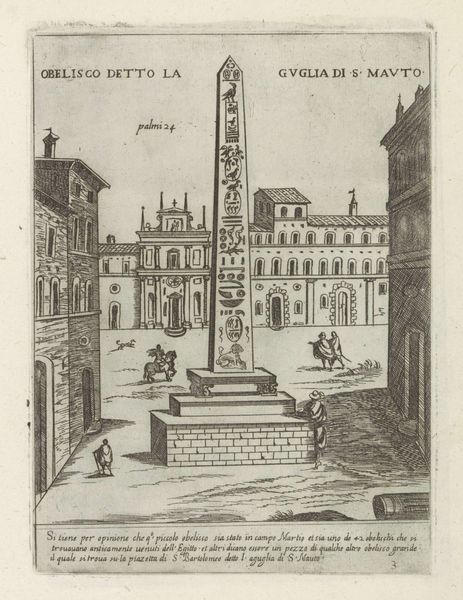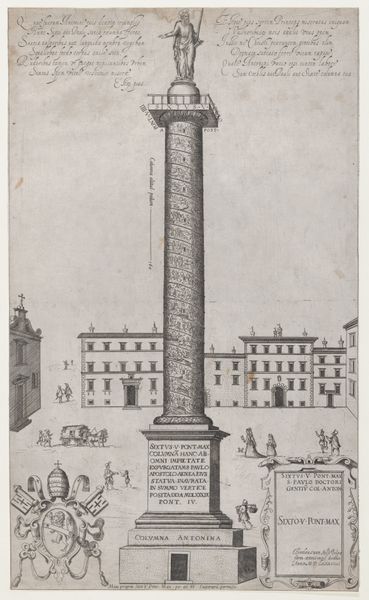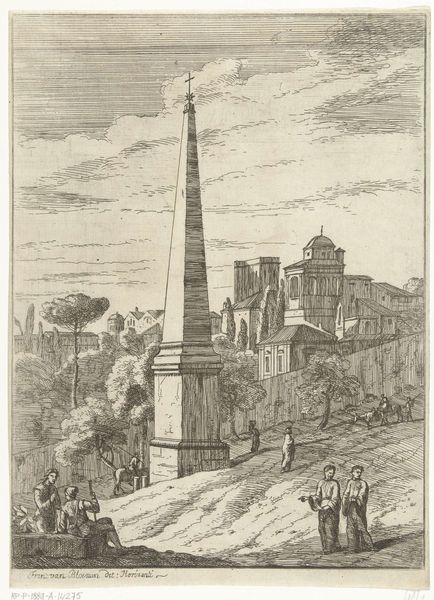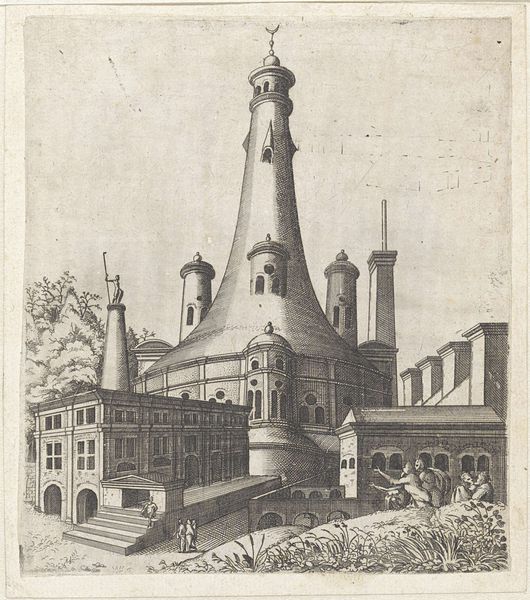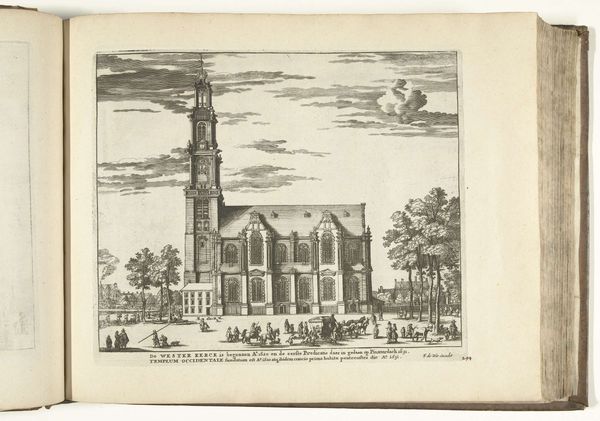
print, engraving, architecture
# print
#
perspective
#
line
#
cityscape
#
history-painting
#
italian-renaissance
#
engraving
#
architecture
Dimensions: height 215 mm, width 156 mm
Copyright: Rijks Museum: Open Domain
Curator: Giovanni Maggi's engraving, "Obelisk voor de Santa Maria Maggiore," created between 1576 and 1618, presents us with a bird's eye view of the Roman cityscape. The architectural rendering focuses predominantly on the obelisk itself and Santa Maria Maggiore church. What are your first impressions of it? Editor: It’s striking how the severe linearity gives this print such a somber mood. The precision feels almost cold, clinical, focusing more on documentation than on the lively chaos I would imagine was the reality of Renaissance Rome. The rigid architectural presentation comes across like a social blueprint – almost authoritarian in its clarity. Curator: That's an interesting take. I see the detailed depiction more as an exercise in conveying the power and permanence of the Church through the grand architectural scale. Consider the context: this print would have circulated amongst a specific audience, mainly wealthy landowners who acted as powerful city members during that era, who would be impressed by these grandiose depictions. It showcases papal authority and control. Editor: But aren't you, in a way, proving my point? Power is visually asserted here, isn't it? Look at the lone figures scattered near the base of the obelisk. They’re dwarfed by its overwhelming height and even by the inscription “Sistus VPM” chiseled on the base. It becomes clear whose voice matters. These elements are powerful and purposeful, and reflect real disparities. The imposing nature is so heavy handed and pointed, so power-filled and grandiose. Curator: Perhaps. But also consider that Renaissance cityscapes often celebrated urban improvements, which were seen as symbols of progress and civic pride. These artworks not only reflected power dynamics but also the urban renewal, driven in part by the Church that created work and trade. Maggi is highlighting how Rome is being made better and stronger, as well as acting as historical documentation. Editor: I still feel that what is being depicted here cannot be separated from who decided it should be depicted and disseminated, and it certainly carries a distinct propagandist charge of power during this specific moment in history. I think interrogating these artistic decisions is necessary to gain deeper historical context about that moment. Curator: Well, no one can deny its potent, layered effect. The contrast you pointed out makes for an intriguing analysis that does go to the core of the period’s identity. Editor: Indeed, it allows us to unpack the sociopolitical implications embedded within ostensibly straightforward artistic depictions of civic and architectural "improvements".
Comments
No comments
Be the first to comment and join the conversation on the ultimate creative platform.
